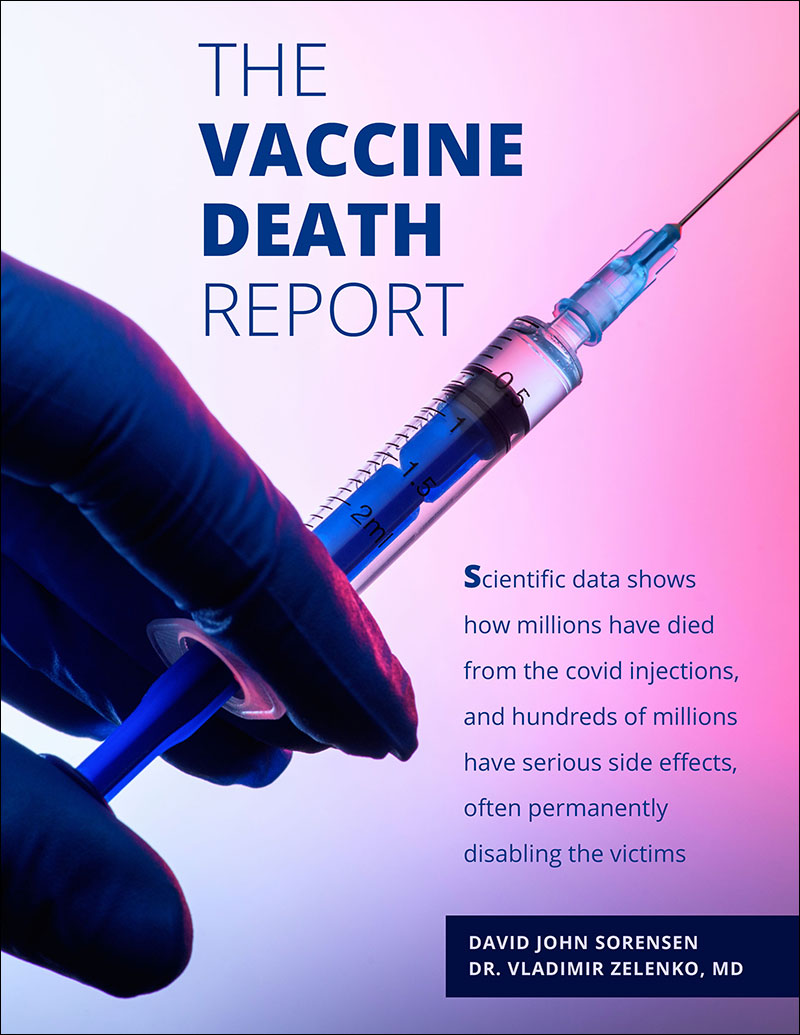Humanity’s leading voices in the fields of science, healthcare, law and journalism are speaking out. Listen to these heroes of humanity, who risk everything to inform you about what is truly happening in the world today.
VACCINE DEATH REPORT
Evidence of millions of deaths and serious adverse events resulting from the experimental COVID-19 injections
Investigative journalist David John Sorensen and world renowned ‘Physician of Presidents’ and nominee for the Nobel Peace Prize Dr. Vladimir Zelenko combined their knowledge to reveal something devastating to the world: the scientific data overwhelmingly shows how probably millions have died from the covid injections, and hundreds of millions are suffering crippling side effects, that often permanently disable the victims for life. The Vaccine Death Report provides all the data, along with hundreds of references, for further investigation.
This is a critical alarm call to humanity. Download it now and spread it far and wide.
GO TO THE VACCINE DEATH REPORT




Please watch this short video :Senator Johnson Vaccine Panel: MIT Professor Retsef Levi ‘Questions Covid-19 Vaccine Narrative’
… and the diseases brought by the migrants at the South border!
From the New York Times via Yahoo News:
Soon we will have to deal not with covid but with bubonic and pneumonic plague, and the hundreds of other diseases that rats spread. We are in for decades of heavy loss of life, both from infectious diseases and the dangerous vaccines and other medicines that we use to treat them.